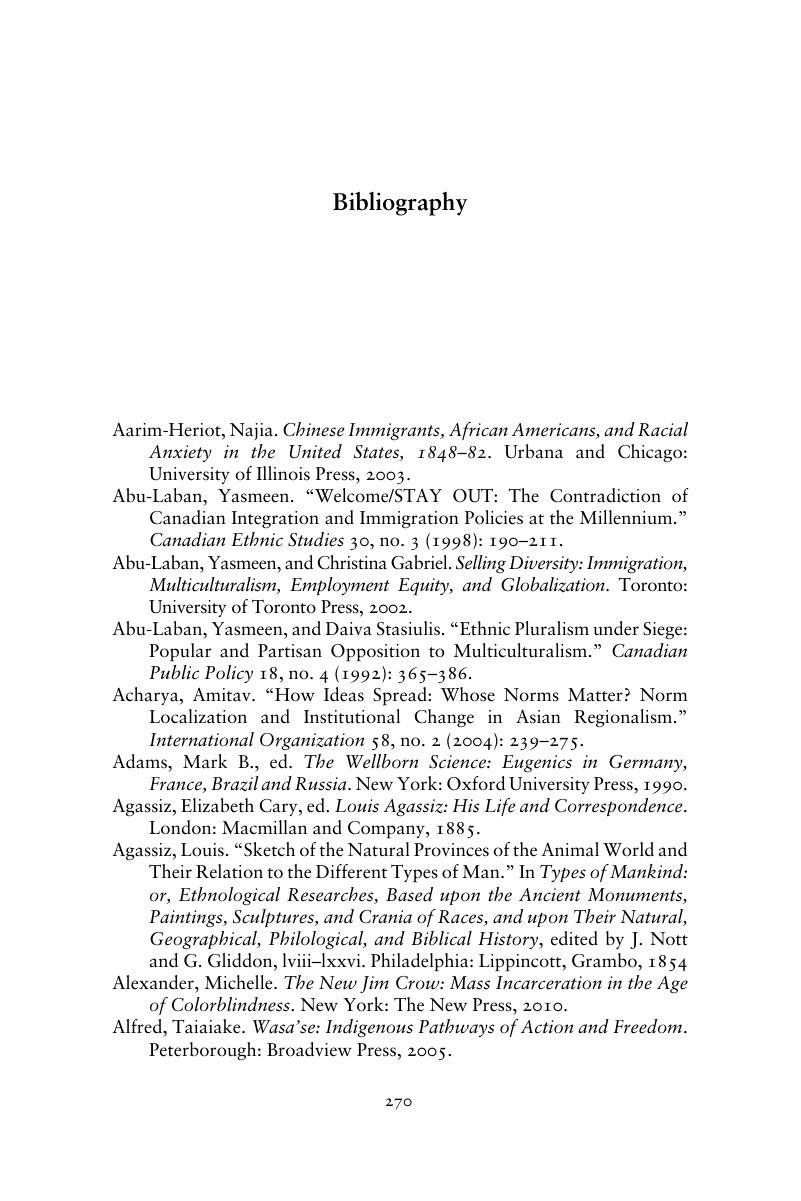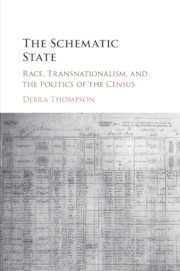Book contents
- The Schematic State
- The Schematic State
- Copyright page
- Contents
- Figures and Tables
- Book part
- Glossary
- 1 Invitation
- 2 Orientation
- 3 Transnational Biological Racialism
- 4 The Death and Resurrection of Race
- 5 The Multicultural Moment
- 6 The Multiracial Moment
- 7 The Future of Counting by Race
- Book part
- Bibliography
- Index
- References
Bibliography
Published online by Cambridge University Press: 27 October 2016
- The Schematic State
- The Schematic State
- Copyright page
- Contents
- Figures and Tables
- Book part
- Glossary
- 1 Invitation
- 2 Orientation
- 3 Transnational Biological Racialism
- 4 The Death and Resurrection of Race
- 5 The Multicultural Moment
- 6 The Multiracial Moment
- 7 The Future of Counting by Race
- Book part
- Bibliography
- Index
- References
Summary

- Type
- Chapter
- Information
- The Schematic StateRace, Transnationalism, and the Politics of the Census, pp. 270 - 310Publisher: Cambridge University PressPrint publication year: 2016



